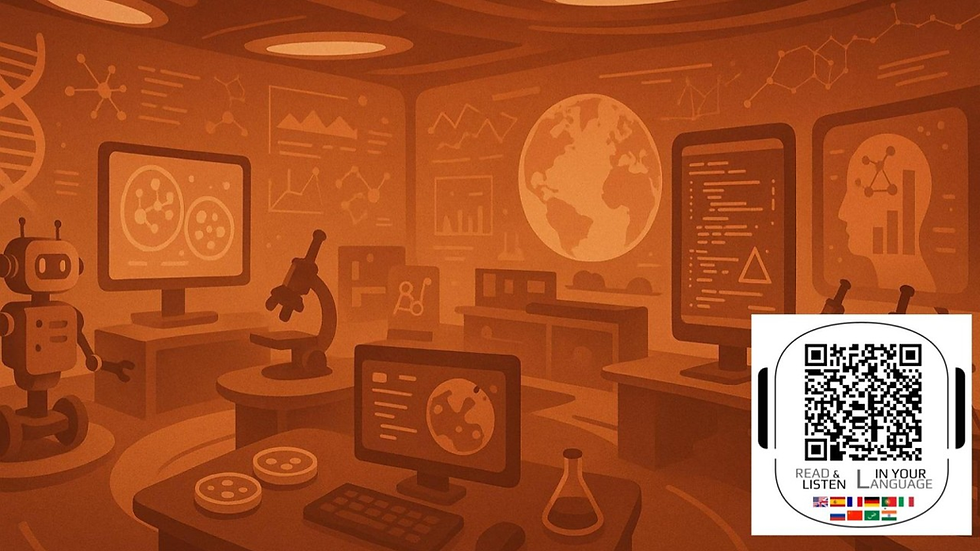Museums as Interactive Labs: The Future of Science and Discovery Centers
- carlo1715
- 4 ago
- Tempo di lettura: 2 min

Imagine walking into a museum where nothing is behind glass. Where you can code a robot, grow cells in a petri dish, or simulate the climate of the year 2100. In this museum, the goal isn’t just to observe science, it’s to do it.
As the world faces unprecedented challenges in health, environment, and technology, a new model of museum is emerging: the interactive science lab. These aren’t just exhibition halls, they are living laboratories where discovery is hands-on, interdisciplinary, and deeply collaborative. This shift represents not only a change in design, but a transformation in purpose. Science museums are evolving from places of passive education to active nodes in global innovation networks.
From Showroom to Studio
Traditional science museums often showcased finished products: telescopes, fossils, models of DNA. The new generation invites visitors into the process:
Try out CRISPR gene editing with safe simulations.
Join a climate hackathon solving real-world problems.
Collaborate with scientists on citizen science projects, from mapping bird migrations to tracking air quality.
The space itself becomes an engine of participation and problem-solving, one where public curiosity drives scientific inquiry.
Cross-Disciplinary Collaboration
Modern challenges don’t fit neatly into academic silos. Neither should science museums.
The most impactful interactive labs now incorporate:
Design thinking studios that merge engineering and art
Data visualization theaters that turn complex statistics into immersive storytelling
Bio-art installations that question the boundaries of nature and culture
This cross-pollination expands the role of museums from educational spaces to catalysts of new knowledge creation.
Empowering Community Science
Interactive labs also support community empowerment. By turning visitors into co-researchers, museums can:
Democratize access to tools and data
Highlight citizen-led discoveries
Foster a sense of agency in solving local and global problems
For example, urban youth can use sensors to monitor water quality in their neighborhoods, then present findings in exhibitions co-curated with scientists. In this model, science becomes not just explanatory, but transformative.
Flexible, Responsive Design
Interactive labs require adaptive architecture:
Modular workstations
Mobile exhibits that evolve with public input
Open labs that host drop-in experiments or structured programs. This flexibility makes science feel contemporary and alive, responding to new discoveries, emerging crises, and community needs in real time.
Beyond STEM: The STEAM Future
Crucially, these spaces do not separate science from art, history, or emotion. Instead, they embody the principles of STEAM (Science, Technology, Engineering, Art, Mathematics), recognizing that the future belongs to integrative thinkers.
By combining:
Artistic interpretation of scientific ideas
Ethical dialogue around emerging tech
Cultural stories of innovation across societies
Interactive labs become more than technical, they become human.
Conclusion: A Lab for the Living Museum
In the Living Museum of tomorrow, science is not static knowledge on display. It is an evolving conversation between institutions and individuals, past and future, curiosity and action. By transforming into interactive labs, museums can offer visitors something far more powerful than information: participation, responsibility, and inspiration. Because the future of science doesn’t belong to a few. It belongs to all of us.



Commenti